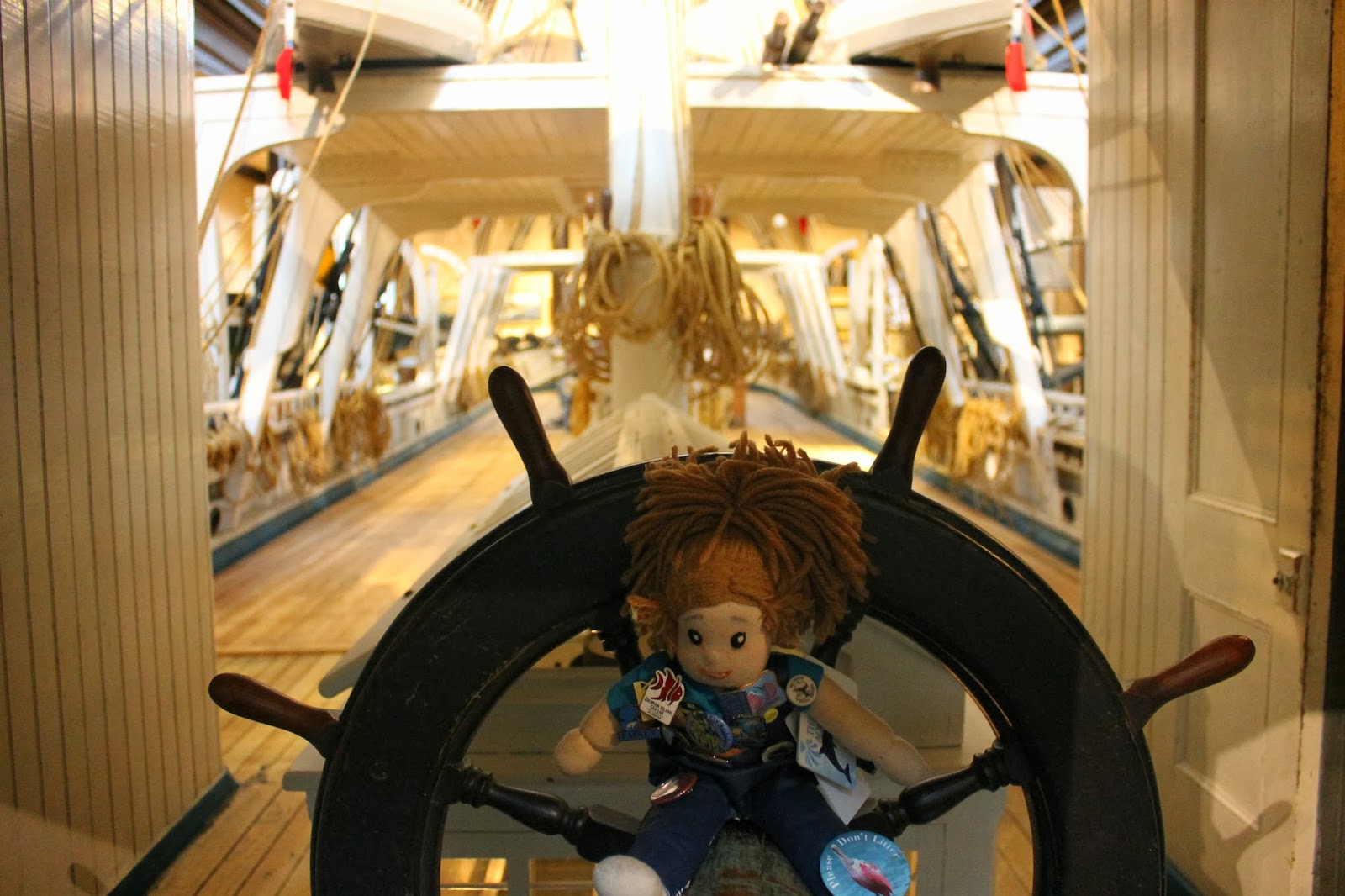I've been freezing here in the USA, but it's been sooooo worth it! I've snuggled up inside a whaling museum to get away from all the snow (although making snow angels and having snow ball fights is good fun after everyone's finished work!) so that I can find out more about the job of a museum staff member.
I visited Bob, who's the Science Director at the New Bedford Whaling Museum in Massachusetts, and he showed me around:
This museum is 111 years old and it's the most comprehensive/complete museum devoted to the global story of whales, whaling and the cultural history of the region!!!
The staff at the museum are responsible for preserving (protecting so that it lasts a long time) and cataloging (sorting, labelling and putting everything together in order) the artifacts (objects/items), creating exhibits,
 |
| A ship cutaway model so that you can see all the details inside a real ship. |
writing about the history of the area and its connection to the ocean. They also teach students of all ages (and their teachers). The museum not only has exhibits that you can look at, but it has a library too which can be used by interns and students from around the world...they've even had some from South Africa!!!
During my visit I've been able to see so much, one of the best things was stepping onto the world's largest ship model called the Lagoda.
It's only half the size of a real whaling ship but boy, was it huge! I also got to see the world's largest exhibit of scrimshaw. (This is artwork created on hard parts of marine animals...like teeth).
I got to visit some of the artifact storage, including a large harpoon collection (which haven't been used since the 1920's)
and objects that belonged to whaling families (things like dolls, fine art, furniture etc.).
I even got to sit on the skull of a 14.6m sperm whale.
How cool!
and objects that belonged to whaling families (things like dolls, fine art, furniture etc.).
I even got to sit on the skull of a 14.6m sperm whale.
How cool!
Something which you would expect at a whaling museum is skeletons. The museum has skeletons of 4 different species which they use to teach people all about whales, whale biology and whale conservation.
While I was visiting, I was also lucky enough to spend some time with students from Rochester while they were learning all about food chains and food webs.
What an awesome visit and what a different kind of marine job! Did you ever think about working in a museum? Well, if you'd like to know more about museum jobs, why not visit your local museum and see if they have a marine expert and have a chat to them about their job.
Have a great week Sea Fans!
Chat soon.
Cheers!
Abby
}( *)8
 |
| Me on a Humpback vertebrae. |
What an awesome visit and what a different kind of marine job! Did you ever think about working in a museum? Well, if you'd like to know more about museum jobs, why not visit your local museum and see if they have a marine expert and have a chat to them about their job.
Have a great week Sea Fans!
Chat soon.
Cheers!
Abby
}( *)8





















